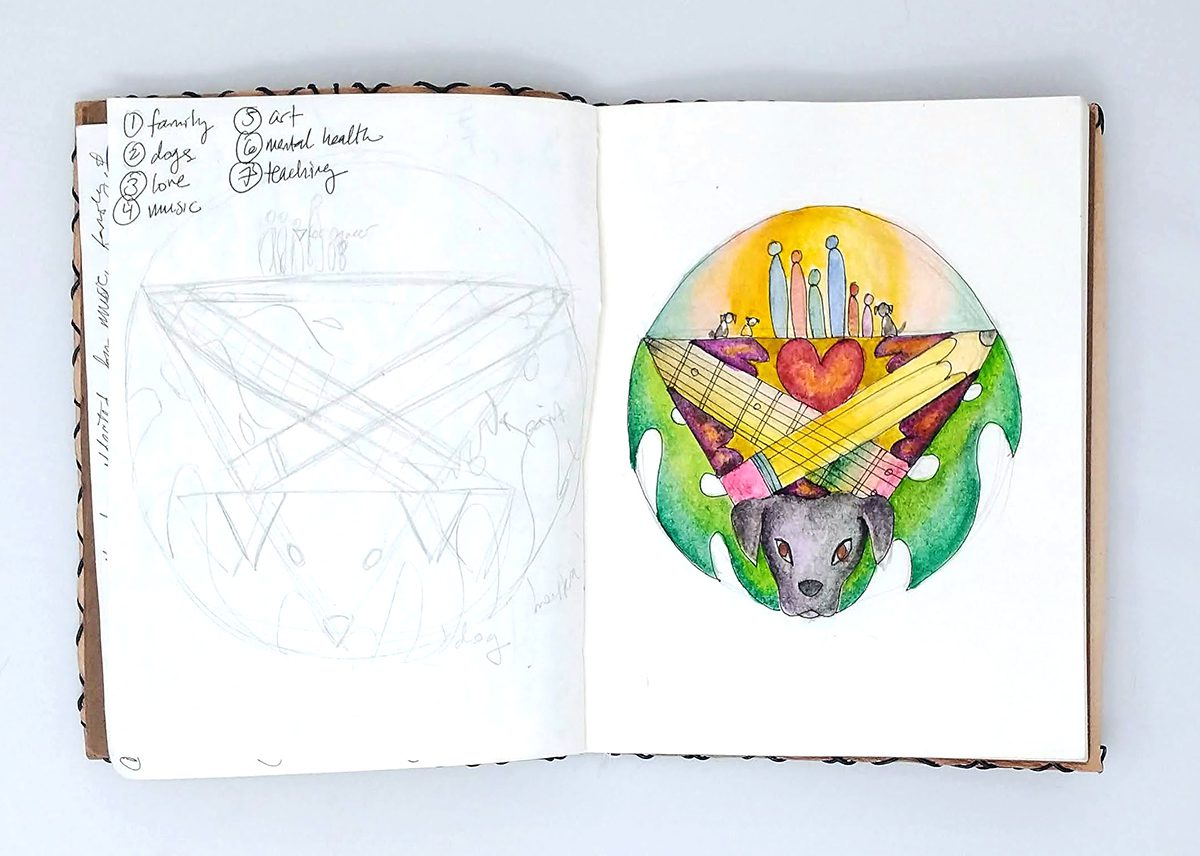Do you want to try something new on the first day but feel stuck? An engaging way to get students to make art on the first day is to guide them through creating a heart map. If you have heard of heart maps before, you may have seen them as a brainstorming tool for written work. In the art room, they can be used for introspection in students’ artmaking. On the first day, heart maps will allow you to get to know each student by showing you what makes them who they are. Plus, you will have art to cover the walls and hallways the first week of school! This activity can be implemented at any grade level with adaptations.

Here are five simple steps to creating heart maps on the first day of school:
1. Introduce Surrealism.
Heart maps require a Surrealist approach to brainstorming, with the tenant of automatism or creating without conscious intent. This will push students past the “I don’t know what to draw!” block all we are familiar with. This may seem complex at first, so ask students if they ever doodle without thinking. If they do, then they have already done automatic drawing
For more ways to introduce Surrealism to your students, check out the FLEX Collection, Introduction to Surrealism, and the article, 9 Surrealists Your Students Need to Know.
2. Facilitate Automatic Writing.
To guide the creation of each student’s heart map, start with automatic writing. Demonstrate this skill with your students by asking for a random topic. Choose one they share, then speak a train of thought out loud for them to hear.
Read aloud one question at a time, and give students a set amount of time to respond. Thirty seconds to a minute per question is a good place to start. Have each question visible for students to reference while they work.

Ask self-reflective questions like:
- What people or animals have been important to you?
- What are some experiences or events you’ll never forget?
- What secrets have you kept in your heart? (You don’t have to share any, but try to find a metaphor for them.)
- What small things or objects are significant to you?
- What colors represent different emotions, events, and relationships?
- What has really affected your heart?
Do you work with English Language Learners and need a quick way to adapt this for them? Simplify the questions and provide a copy so each student can see the written words. Students can also answer questions in their primary language or with drawings and doodles.
3. Reflect on Responses.
Ask students to read through their written responses. Have them find things they think are important. They can also add anything that may have been left out. Students decide on five to ten final things to include in their heart map.
4. Sketch a Shape.
Students draw a shape in their sketchbooks. They will then use size, shape, color, and pattern to communicate the things from the automatic writing step that make up their heart.

5. Complete the Drawing.
Here is where you decide how in-depth you want this project to be. This can be a quick sketchbook exercise, or it can also be expanded into a larger project.
Three options are outlined below:
- Option 1: Keep the heart map as a quick exercise.
Students complete their heart map in their sketchbook and use it to practice writing a reflection. There are a ton of FLEX resources to guide students through their reflections. You can find those and many more in FLEX Curriculum. Students share their maps with one another and find three other students who have similar maps. Take part in sharing if you made a heart map along with them.

- Option 2: Push the heart map to the next level.
Each student creates a literal map of their heart using their initial sketch. How do they get from one area to another? Are there different continents, countries, or neighborhoods? Are there bodies of water? Or is it a small town? Display the finished maps.

- Option 3: Continue challenging students with automatism.
Students create an abstract study that captures their heart map. Demonstrate how to create a viewfinder and how to use it to find interesting parts of their sketch. Students track each found image in their sketchbook. Ask students to choose one of these images to develop further. Students then transfer their final image to another surface with a pre-designated medium.

The beauty of a heart map is that it encourages artists at all levels to share who they are in a visual way. Introducing Surrealism to the students provides them with intriguing imagery and a broader perspective of what art is. The inclusion of automatism equips students with a strategy for sketching or brainstorming when they feel stuck. This gives students the confidence to develop their own prompts as well as their own visual voices as they continue to make art this year.
Want to learn more about heart mapping? Check out Georgia Heard’s TEDx Talk on the subject.
Looking for more ways to get to know your students on the first day? Try the article, 5 Ways to Make Art on the First Day of School, and the PRO Pack, First Day Activities. You can find this Pack in PRO Learning to learn more.
What is your go-to first day of school activity?
How do you teach self-reflection in artwork?
Magazine articles and podcasts are opinions of professional education contributors and do not necessarily represent the position of the Art of Education University (AOEU) or its academic offerings. Contributors use terms in the way they are most often talked about in the scope of their educational experiences.








